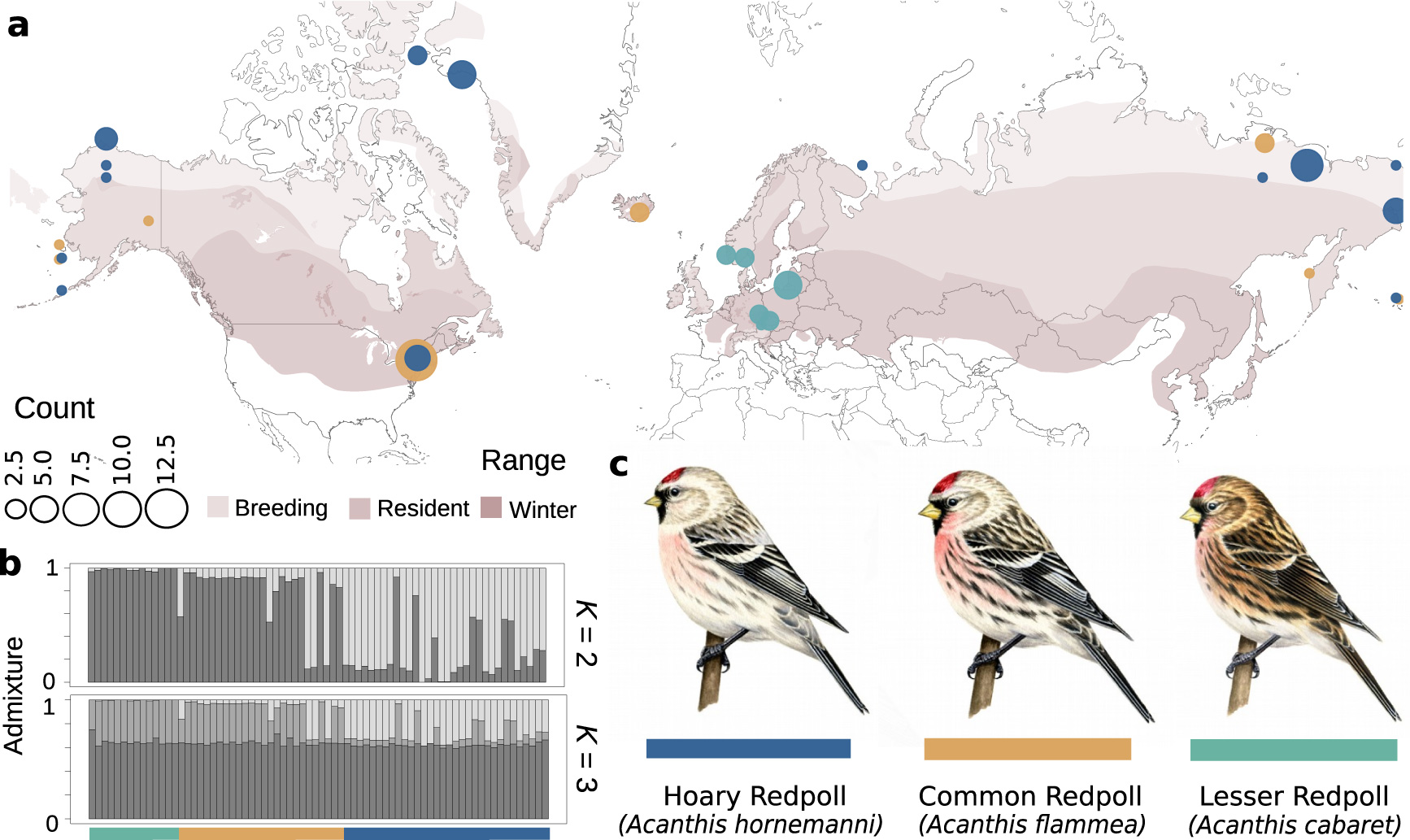A newly published paper suggests that the redpoll complex is better treated as one species, rather than the three currently recognised.
The findings suggest that variation in the redpoll appearance stems from a specific chromosomal inversion (i.e. when a chromosome undergoes breakage and rearrangement within itself).
Within this inversion, Erik R Funk and his team of researchers found multiple candidate genes related to melanogenesis (the production of melanin pigments), carotenoid colouration, and bill shape, suggesting the inversion acts as a supergene controlling multiple linked traits in redpolls.

The new paper provides genetic evidence that suggests that all redpoll forms are best treated as one species, from the small, brown and streaky Lesser Redpoll (above) to the big, bulky and frosted Arctic Redpolls (Clive Daelman).
The varying redpoll forms are described in the paper as 'ecotypes', which are more akin to morphs rather than qualified subspecies (let alone species), citing that the observed differences in ecotype across redpoll's range (including plumage colour and bill morphology) are likely driven by environmental factors (such as climate and available resources, including habitat and food), which maintain the variations in the supergene.
The researchers sequenced the genomes of 73 individual redpolls from the three described redpoll ecotypes (currently treated as three species: Lesser, Common and Arctic Redpolls), taking samples from Europe, North America and eastern Asia.
Crucially, they found that redpolls lack population genetic structure by either geography or ecotype boundaries, and that genetics failed to differentiate each individual according to its current specific classification.

a Seasonal distribution of redpolls shown in purple, with lightest indicating breeding range, and darkest indicating wintering range. Colored dots indicate sample number and locations with blue corresponding to hoary redpoll, gold corresponding to common redpoll, and green corresponding to lesser redpoll. b conStruct plots for a K of 2 and 3 showing that genetic clustering poorly aligns with taxonomy. c Illustrations of the three redpoll ecotypes demonstrating differences in size, bill, and plumage coloration (Illustrations by Liz Clayton Fuller). Distribution was generated using shape files provided by BirdLife International. Graphic from Funk et al (2021).
It appears that the aforementioned supergene is responsible for the wide range of appearances seen within redpolls and, when this was removed the equation, redpolls' genetic information was otherwise extremely similar, with gene flow responsible for this homogenisation.
Three species and a range of distinctive subspecies are currently recognised across the Holarctic range of redpoll(s). However, the genetic evidence provided would suggest that all redpolls are best treated as conspecific.
Reference
Funk, E R, Mason, N A, Pálsson, S, Albrecht, T, Johnson, J A & Taylor, S A. 2021. A supergene underlies linked variation in color and morphology in a Holarctic songbird. Nature Communications 12, 6833. DOI: https://doi.org/10.1038/s41467-021-27173-z




